National Park Superfans Who Visit All 408 Locations—At Least Once
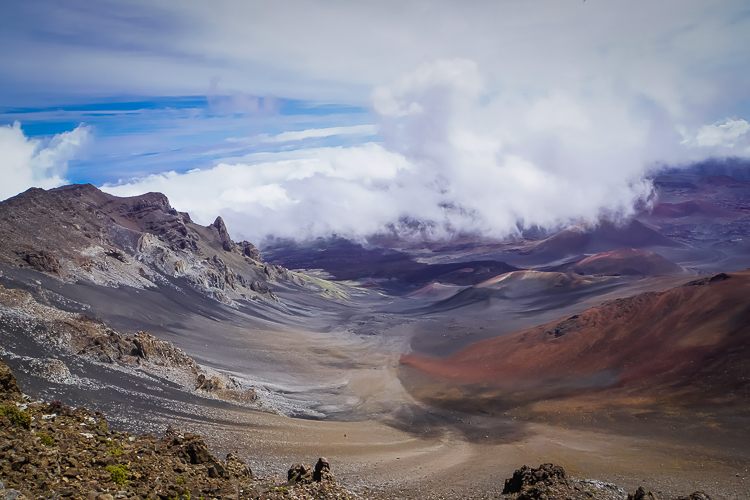 Haleakala National Park, Hawaii, visited by Shelly and Don Hafner, who visited 59 National Parks in 59 weeks. (Photo: Don and Shelly Hafner)
Haleakala National Park, Hawaii, visited by Shelly and Don Hafner, who visited 59 National Parks in 59 weeks. (Photo: Don and Shelly Hafner)
Roland Spies was in the midst of a fabulous vacation when he made a decision that, later, he admitted, was perhaps born of “a little bit of insanity”.
He and his son, Jack, were visiting Glacier National Park in Montana in the summer of 2012. The park is over one million acres of wilderness that includes 175 mountains, over 700 lakes, grizzly bears, shaggy mountain goats and historic lodges. Spies and his son had gone river rafting, hiked parts of the over 700 miles of trails, and trekked up to the park’s high passes. At some point during this string of perfect moments, Jack remarked that they should visit more national parks. Caught up in the moment, Spies’ agreed and upped the ante. Why not visit all the national parks?
“After our trip was over, I get on the internet and the first thing I find out is that there are 59 national parks,” says Spies, who lives in Illinois and works in the legal department of State Farm, an insurance company. “I joke with him—I’m already in my mid-50s—I said, ‘Buddy, we’re gonna have to do this with some diligence. If we don’t hit two or three a year, I don’t think we’re going to make this.”
It would have been easy to sheepishly push aside a vacation-euphoria induced decision, like so many people do. But Spies and his son committed to the challenge, and he threw himself into research. That’s how he stumbled across the National Park Travelers Club and found out he was definitely not the first person to undertake this mission.
 Stamps from some of the National Parks visitied by Roland Spies. (Photo: Roland Spies)
Stamps from some of the National Parks visitied by Roland Spies. (Photo: Roland Spies)
Founded in 2004, the club made official an informal network of park enthusiasts that had been swapping tips and stories for years. Since then, its membership has swelled to around 1,500 dues- paying members. (Several thousand additional people are registered to use the website, but have not paid the $10 membership fee that allows them access to a roster of trip planning and networking services.) The club also holds an annual convention (near a national park site, of course) and publishes a newsletter.
As he dipped further into the world of national park completers, Spies discovered that, compared to some, his quest seemed almost modest. The National Park Service oversees 59 national parks—and 349 additional sites that include Civil War battlefields, monuments and historic houses. And plenty of people were going for all 408.
Some overachievers had even met that goal—and decided to do the equivalent of a National Park Travelers Club victory lap, revisiting their favorites.
Many park travelers use the official lingo of the park system, and refer to sites as “units”, as in “I have 102 units.” Many also participate in a park-sponsored “passport” program. Launched in 1986, the program allows anyone who visits an NPS site to log their visit with a special stamp, which they can impress on the pages of an official passport book for sale at parks and in their online store. Most stamps resemble actual passport stamps; plain and round, with the park’s name and an adjustable date. Almost all of the 408 units offer a stamp, usually located in the visitor’s center or some other central location. Once a park has been stamped, it’s considered “cancelled”.
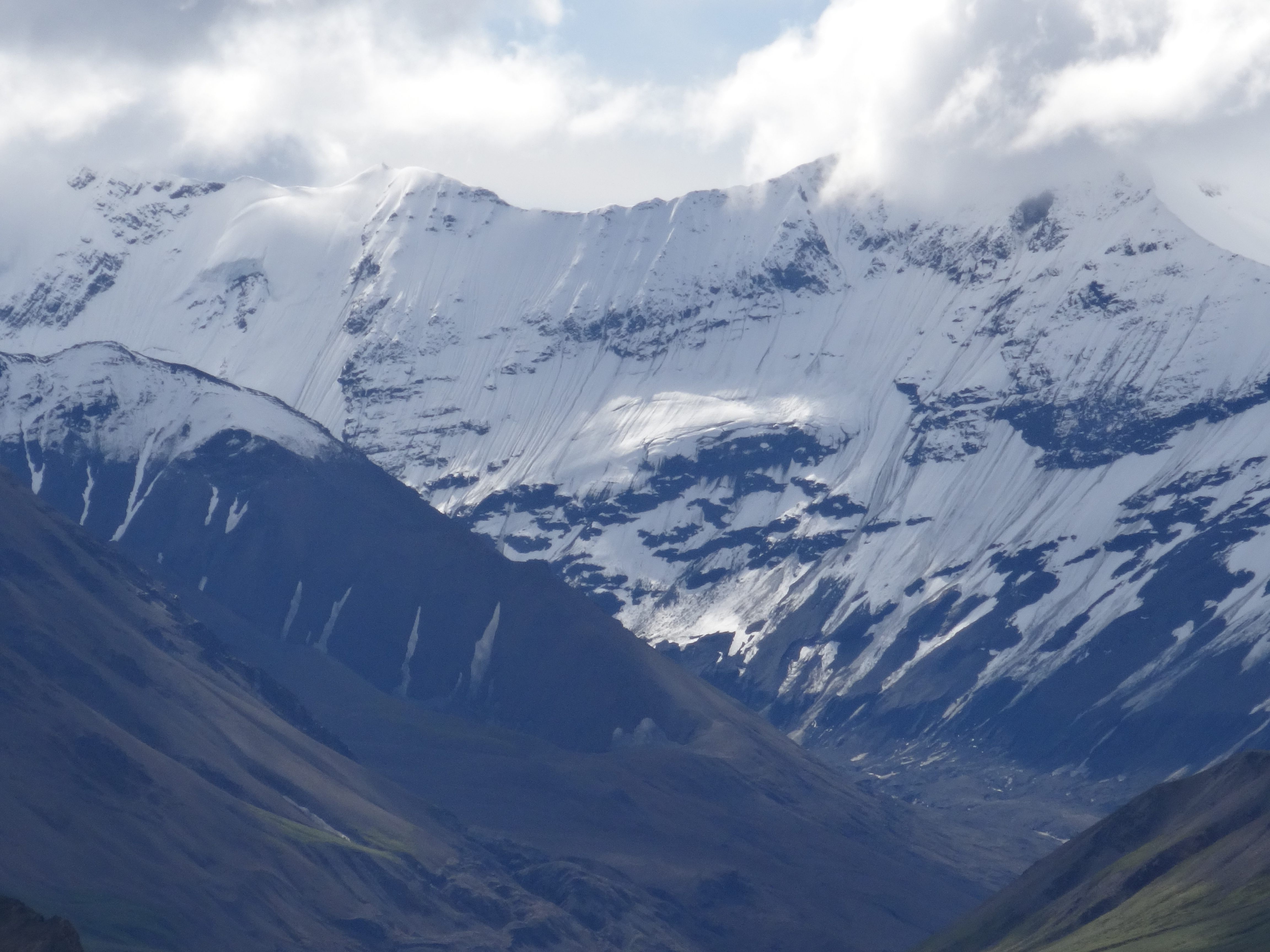 Denali National Park, Alaska, August 2014. (Photo: Don and Shelly Hafner)
Denali National Park, Alaska, August 2014. (Photo: Don and Shelly Hafner)
Since Spies made that rash promise at Glacier National Park, he has racked up 147 “official” units (he guesses he had been to about 50 units before he started logging them with the club) and become the president of the NPTC. He has been to 34 national parks, 9 of them with his son. They will cancel the two national parks in Hawaii this year.
Plenty of units are fairly simple to collect, he says. On a business trip to Washington D.C., he was able to knock out several, as there are dozens of urban NPS sites there. But a lot of places aren’t so easy to get to, particularly in the national park category. The Gates of the Arctic, Katmai and Kobuk Valley national parks in Alaska offer limited to no in-park services, few if any trails, and are commonly accessed by air taxis that trekkers arrange themselves. The National Park of American Samoa and the two national parks in Hawaii are accessible only via plane to most people. All of these trips can be expensive.
“For some folks, the travel almost boggles the mind,” says Spies.
Due to the sheer magnitude of the undertaking, lots of park completers are retirees who can devote their life to travel. But plenty, like Spies, have fulltime jobs and families, and schedule their obsession around spare weekends and vacation time.
Then there are the people who attack the goal with a bit more focus.
Like Spies, Bill Goldstein had a revelatory moment. In the summer of 2010, he embarked on an epic road trip with his wife and two sons. They drove west and hit Badlands National Park, Grand Teton National Park, Grand Canyon National Park, all five national parks in Utah, Yellowstone National Park and the Great Smoky Mountains National Park. That was when Goldstein realized he was “obsessed and addicted”. They would visit every national park as a family, and they would do it before their children (who were 12 and 14) turned 18.
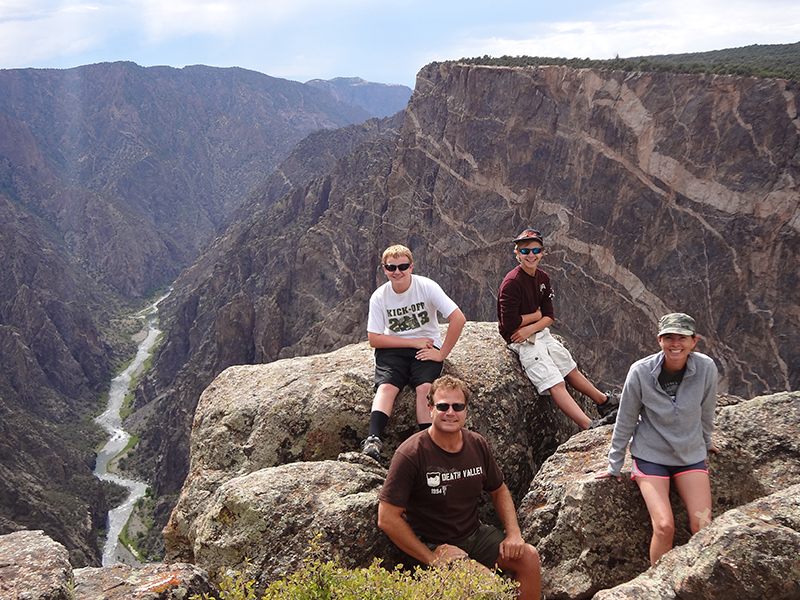 The Goldsteins at the Black Canyon of the Gunnison National Park. (Photo: Bill Goldstein)
The Goldsteins at the Black Canyon of the Gunnison National Park. (Photo: Bill Goldstein)
The Goldsteins occasionally flew or rented cars, but mostly they traveled around the country in a 2008 Honda Accord that now has 204,000 miles on it. They broke their trips into weekend stints and longer vacations, once driving close to 7,000 miles over several days. They stayed in hotels mostly, and Goldstein worked out a pre-trip system that involved Excel spreadsheets and Google maps. There were rules: no cell phones, no music. In the car they talked, gazed out the window, and played cards. This was tougher when the boys got older Goldstein admits.
“Our vacations are not relaxing,” he says. “We get up ear-ly. Sometimes four o’clock in the morning.”
But any grumbling over a 4 a.m. start time for a long hike was typically tempered once a bison or some other natural wonder made an appearance. The trips, Goldstein says, ultimately brought his family closer together. They completed the quest in August 2014 at the Gates of the Arctic in Alaska. The entire journey is documented on the website 59Before18.com, and Goldstein is in the process of cutting his hundreds of hours of footage into a film.
But even their arduous travels pale in comparison to the quest of Don and Shelly Hafner, who also documented their national parks journey on a website. They set up a stringent timeline: 59 parks in 59 weeks.
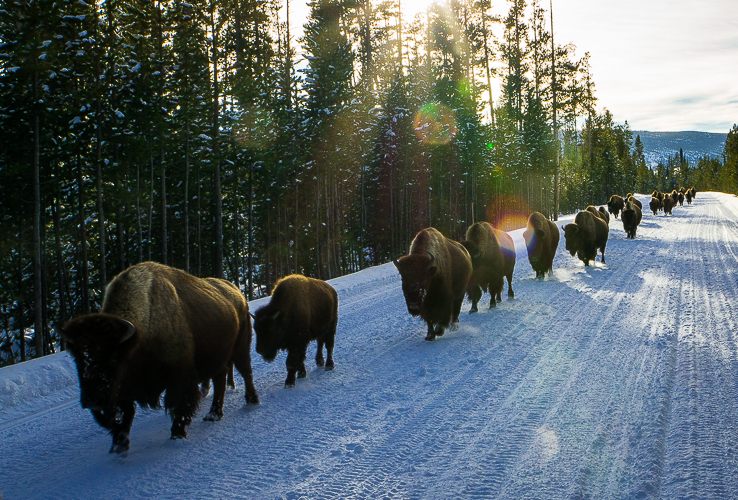 A line of bison in Yellowstone National Park, January 2015. (Photo: Don and Shelly Hafner)
A line of bison in Yellowstone National Park, January 2015. (Photo: Don and Shelly Hafner)
The Kansas City couple quit their jobs on the same day in 2014, put their house up for rent, and moved into a 24-foot trailer with their two Maltese dogs, Bubba and Lilly. It was, Don Hafner says, “an extreme move.”
Social media novices, the Hafners plunged into Twitter, Instagram and Pinterest. Soon, clear preferences emerged—the Lake Clark National Park Twitter feed blows Yosemite’s out of the water. They networked with fellow parks fans, and met up with many in person. Some they consider close friends now. “No one with a chainsaw ever showed up at camp,” says Hafner. They even met up with the Goldsteins, and they all coincidentally finished up their journeys at the same time in Alaska.
Two years ago, the NPTC held their annual meeting in Alaska. The club outdid itself; there was a cruise down the coast from Vancouver to Anchorage and a pair of chartered planes were enlisted to ferry members in and out of Denali National Park. Rather than fly to the common tourist spots, the club picked out a landing area on a less trafficked glacier. It was “spectacular” says Spies—Jack was so stoked he was “running around like a madman”.
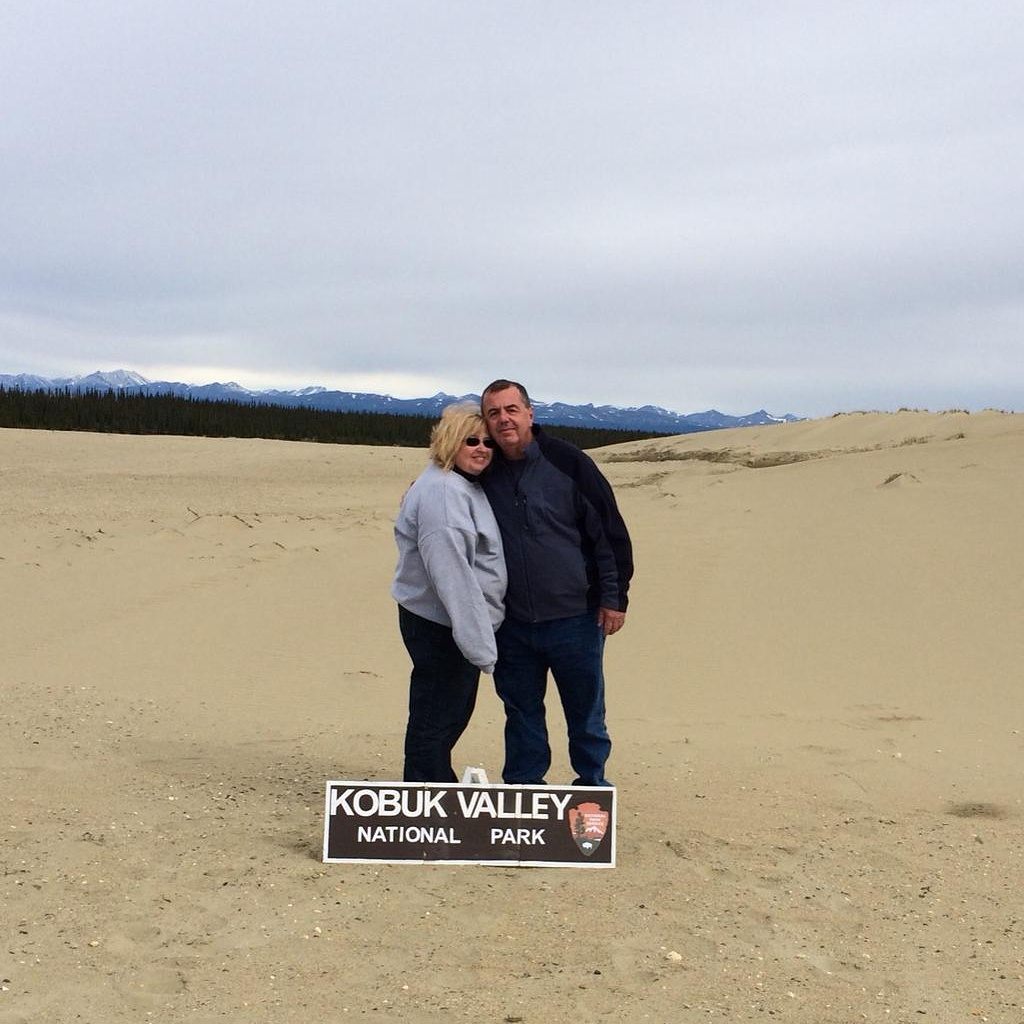 Shelly and Don at Kobuk Valley National Park, Alaska. They reached their 59th National Park on June 5th, 2015. (Photo: Don and Shelly Hafner)
Shelly and Don at Kobuk Valley National Park, Alaska. They reached their 59th National Park on June 5th, 2015. (Photo: Don and Shelly Hafner)
Somebody asked the pilot when he thought someone had last stood where they were standing.
“And he kind of laughs and says, ‘Funny you should ask that,’” says Spies. “‘Because as near as we can tell we don’t believe that another human being has been standing anywhere in this area for at least a decade.” Another passport with a cancelled stamp.










Follow us on Twitter to get the latest on the world's hidden wonders.
Like us on Facebook to get the latest on the world's hidden wonders.
Follow us on Twitter Like us on Facebook